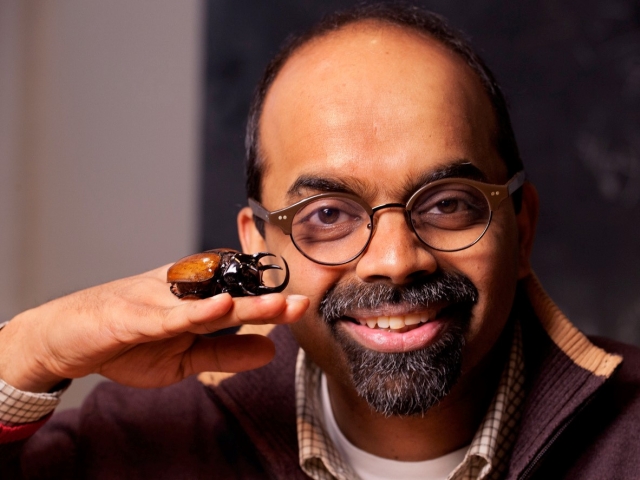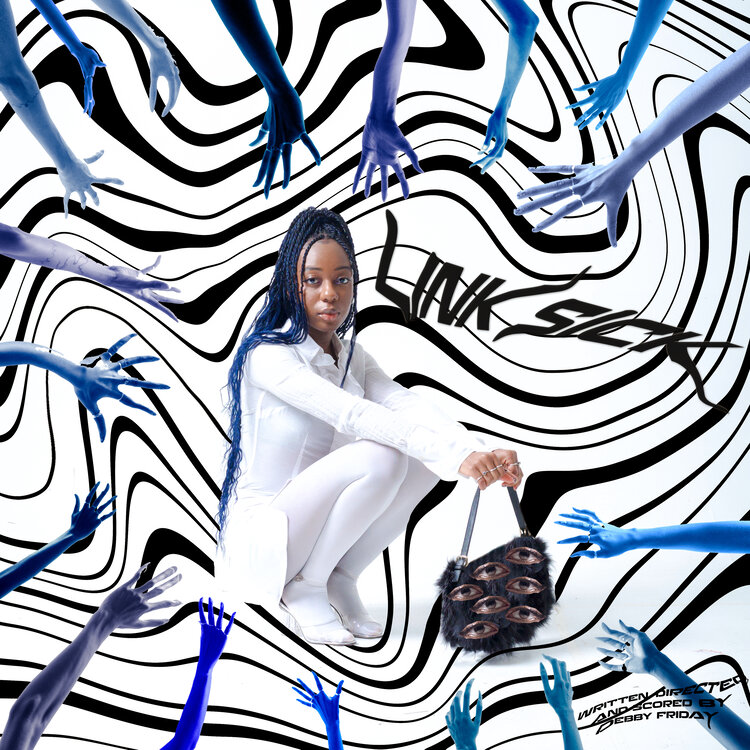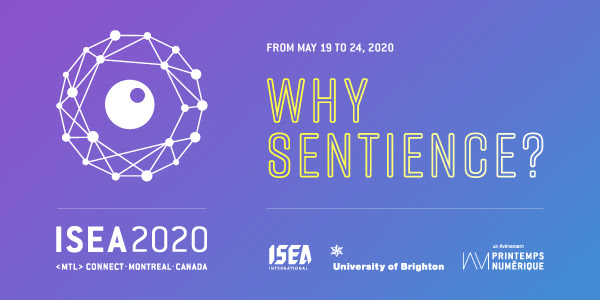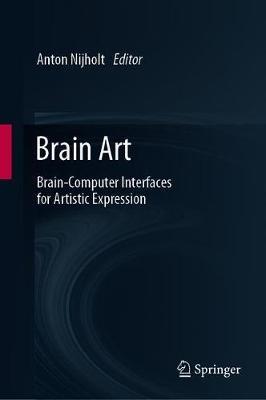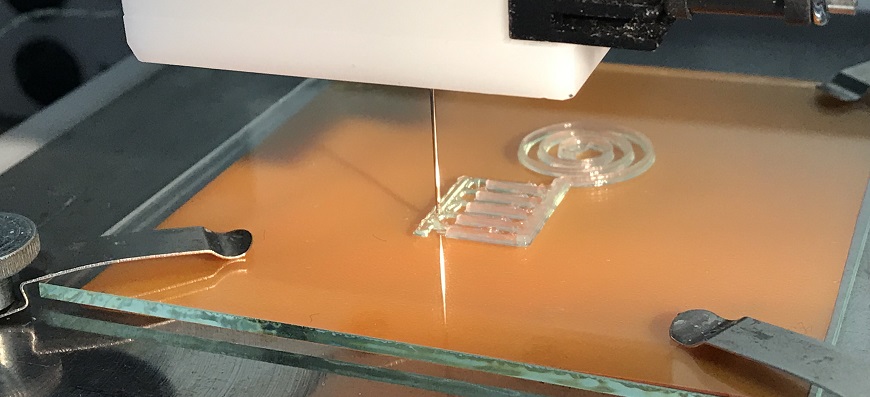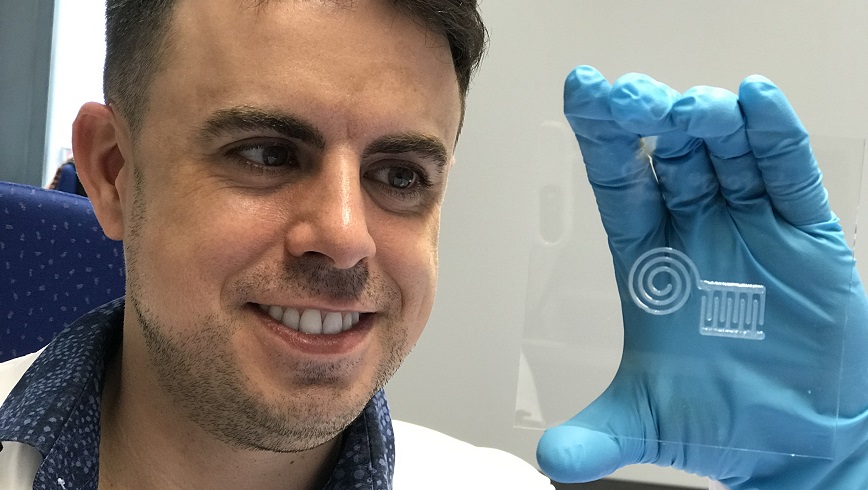There seems to be an explosion (metaphorically and only by Canadian standards) of interest in public perceptions/engagement/awareness of artificial intelligence (see my March 29, 2021 posting “Canada launches its AI dialogues” and these dialogues run until April 30, 2021 plus there’s this April 6, 2021 posting “UNESCO’s Call for Proposals to highlight blind spots in AI Development open ’til May 2, 2021” which was launched in cooperation with Mila-Québec Artificial Intelligence Institute).
Now there’s this, in a March 31, 2020 Council of Canadian Academies (CCA) news release, four new projects were announced. (Admittedly these are not ‘public engagement’ exercises as such but the reports are publicly available and utilized by policymakers.) These are the two projects of most interest to me,
Public Safety in the Digital Age
Information and communications technologies have profoundly changed almost every aspect of life and business in the last two decades. While the digital revolution has brought about many positive changes, it has also created opportunities for criminal organizations and malicious actors to target individuals, businesses, and systems.
This assessment will examine promising practices that could help to address threats to public safety related to the use of digital technologies while respecting human rights and privacy.
Sponsor: Public Safety Canada
AI for Science and Engineering
The use of artificial intelligence (AI) and machine learning in science and engineering has the potential to radically transform the nature of scientific inquiry and discovery and produce a wide range of social and economic benefits for Canadians. But, the adoption of these technologies also presents a number of potential challenges and risks.
This assessment will examine the legal/regulatory, ethical, policy and social challenges related to the use of AI technologies in scientific research and discovery.
Sponsor: National Research Council Canada [NRC] (co-sponsors: CIFAR [Canadian Institute for Advanced Research], CIHR [Canadian Institutes of Health Research], NSERC [Natural Sciences and Engineering Research Council], and SSHRC [Social Sciences and Humanities Research Council])
…
For today’s posting the focus will be on the AI project, specifically, the April 19, 2021 CCA news release announcing the project’s expert panel,
The Council of Canadian Academies (CCA) has formed an Expert Panel to examine a broad range of factors related to the use of artificial intelligence (AI) technologies in scientific research and discovery in Canada. Teresa Scassa, SJD, Canada Research Chair in Information Law and Policy at the University of Ottawa, will serve as Chair of the Panel.
“AI and machine learning may drastically change the fields of science and engineering by accelerating research and discovery,” said Dr. Scassa. “But these technologies also present challenges and risks. A better understanding of the implications of the use of AI in scientific research will help to inform decision-making in this area and I look forward to undertaking this assessment with my colleagues.”
As Chair, Dr. Scassa will lead a multidisciplinary group with extensive expertise in law, policy, ethics, philosophy, sociology, and AI technology. The Panel will answer the following question:
What are the legal/regulatory, ethical, policy and social challenges associated with deploying AI technologies to enable scientific/engineering research design and discovery in Canada?
“We’re delighted that Dr. Scassa, with her extensive experience in AI, the law and data governance, has taken on the role of Chair,” said Eric M. Meslin, PhD, FRSC, FCAHS, President and CEO of the CCA. “I anticipate the work of this outstanding panel will inform policy decisions about the development, regulation and adoption of AI technologies in scientific research, to the benefit of Canada.”
The CCA was asked by the National Research Council of Canada (NRC), along with co-sponsors CIFAR, CIHR, NSERC, and SSHRC, to address the question. More information can be found here.
The Expert Panel on AI for Science and Engineering:
Teresa Scassa (Chair), SJD, Canada Research Chair in Information Law and Policy, University of Ottawa, Faculty of Law (Ottawa, ON)
Julien Billot, CEO, Scale AI (Montreal, QC)
Wendy Hui Kyong Chun, Canada 150 Research Chair in New Media and Professor of Communication, Simon Fraser University (Burnaby, BC)
Marc Antoine Dilhac, Professor (Philosophy), University of Montreal; Director of Ethics and Politics, Centre for Ethics (Montréal, QC)
B. Courtney Doagoo, AI and Society Fellow, Centre for Law, Technology and Society, University of Ottawa; Senior Manager, Risk Consulting Practice, KPMG Canada (Ottawa, ON)
Abhishek Gupta, Founder and Principal Researcher, Montreal AI Ethics Institute (Montréal, QC)
Richard Isnor, Associate Vice President, Research and Graduate Studies, St. Francis Xavier University (Antigonish, NS)
Ross D. King, Professor, Chalmers University of Technology (Göteborg, Sweden)
Sabina Leonelli, Professor of Philosophy and History of Science, University of Exeter (Exeter, United Kingdom)
Raymond J. Spiteri, Professor, Department of Computer Science, University of Saskatchewan (Saskatoon, SK)
Who is the expert panel?
Putting together a Canadian panel is an interesting problem especially so when you’re trying to find people of expertise who can also represent various viewpoints both professionally and regionally. Then, there are gender, racial, linguistic, urban/rural, and ethnic considerations.
Statistics
Eight of the panelists could be said to be representing various regions of Canada. Five of those eight panelists are based in central Canada, specifically, Ontario (Ottawa) or Québec (Montréal). The sixth panelist is based in Atlantic Canada (Nova Scotia), the seventh panelist is based in the Prairies (Saskatchewan), and the eighth panelist is based in western Canada, (Vancouver, British Columbia).
The two panelists bringing an international perspective to this project are both based in Europe, specifically, Sweden and the UK.
(sigh) It would be good to have representation from another part of the world. Asia springs to mind as researchers in that region are very advanced in their AI research and applications meaning that their experts and ethicists are likely to have valuable insights.
Four of the ten panelists are women, which is closer to equal representation than some of the other CCA panels I’ve looked at.
As for Indigenous and BIPOC representation, unless one or more of the panelists chooses to self-identify in that fashion, I cannot make any comments. It should be noted that more than one expert panelist focuses on social justice and/or bias in algorithms.
Network of relationships
As you can see, the CCA descriptions for the individual members of the expert panel are a little brief. So, I did a little digging and In my searches, I noticed what seems to be a pattern of relationships among some of these experts. In particular, take note of the Canadian Institute for Advanced Research (CIFAR) and the AI Advisory Council of the Government of Canada.
Individual panelists
Teresa Scassa (Ontario) whose SJD designation signifies a research doctorate in law chairs this panel. Offhand, I can recall only one or two other panels being chaired by women of the 10 or so I’ve reviewed. In addition to her profile page at the University of Ottawa, she hosts her own blog featuring posts such as “How Might Bill C-11 Affect the Outcome of a Clearview AI-type Complaint?” She writes clearly (I didn’t seen any jargon) for an audience that is somewhat informed on the topic.
Along with Dilhac, Teresa Scassa is a member of the AI Advisory Council of the Government of Canada. More about that group when you read Dilhac’s description.
Julien Billot (Québec) has provided a profile on LinkedIn and you can augment your view of M. Billot with this profile from the CreativeDestructionLab (CDL),
Mr. Billot is a member of the faculty at HEC Montréal [graduate business school of the Université de Montréal] as an adjunct professor of management and the lead for the CreativeDestructionLab (CDL) and NextAi program in Montreal.
Julien Billot has been President and Chief Executive Officer of Yellow Pages Group Corporation (Y.TO) in Montreal, Quebec. Previously, he was Executive Vice President, Head of Media and Member of the Executive Committee of Solocal Group (formerly PagesJaunes Groupe), the publicly traded and incumbent local search business in France. Earlier experience includes serving as CEO of the digital and new business group of Lagardère Active, a multimedia branch of Lagardère Group and 13 years in senior management positions at France Telecom, notably as Chief Marketing Officer for Orange, the company’s mobile subsidiary.
…
Mr. Billot is a graduate of École Polytechnique (Paris) and from Telecom Paris Tech. He holds a postgraduate diploma (DEA) in Industrial Economics from the University of Paris-Dauphine.
Wendy Hui Kyong Chun (British Columbia) has a profile on the Simon Fraser University (SFU) website, which provided one of the more interesting (to me personally) biographies,
Wendy Hui Kyong Chun is the Canada 150 Research Chair in New Media at Simon Fraser University, and leads the Digital Democracies Institute which was launched in 2019. The Institute aims to integrate research in the humanities and data sciences to address questions of equality and social justice in order to combat the proliferation of online “echo chambers,” abusive language, discriminatory algorithms and mis/disinformation by fostering critical and creative user practices and alternative paradigms for connection. It has four distinct research streams all led by Dr. Chun: Beyond Verification which looks at authenticity and the spread of disinformation; From Hate to Agonism, focusing on fostering democratic exchange online; Desegregating Network Neighbourhoods, combatting homophily across platforms; and Discriminating Data: Neighbourhoods, Individuals and Proxies, investigating the centrality of race, gender, class and sexuality [emphasis mine] to big data and network analytics.
…
I’m glad to see someone who has focused on ” … the centrality of race, gender, class and sexuality to big data and network analytics.” Even more interesting to me was this from her CV (curriculum vitae),
Professor, Department of Modern Culture and Media, Brown University, July 2010-June 2018
.•Affiliated Faculty, Multimedia & Electronic Music Experiments (MEME), Department of Music,2017.
•Affiliated Faculty, History of Art and Architecture, March 2012-
.•Graduate Field Faculty, Theatre Arts and Performance Studies, Sept 2008-.[sic]
….
[all emphases mine]
And these are some of her credentials,
Ph.D., English, Princeton University, 1999.
•Certificate, School of Criticism and Theory, Dartmouth College, Summer 1995.
M.A., English, Princeton University, 1994.
B.A.Sc., Systems Design Engineering and English, University of Waterloo, Canada, 1992.
•first class honours and a Senate Commendation for Excellence for being the first student to graduate from the School of Engineering with a double major
It’s about time the CCA started integrating some of kind of arts perspective into their projects. (Although, I can’t help wondering if this was by accident rather than by design.)
Marc Antoine Dilhac, an associate professor at l’Université de Montréal, he, like Billot, graduated from a French university, in his case, the Sorbonne. Here’s more from Dilhac’s profile on the Mila website,
Marc-Antoine Dilhac (Ph.D., Paris 1 Panthéon-Sorbonne) is a professor of ethics and political philosophy at the Université de Montréal and an associate member of Mila – Quebec Artificial Intelligence Institute. He currently holds a CIFAR [Canadian Institute for Advanced Research] Chair in AI ethics (2019-2024), and was previously Canada Research Chair in Public Ethics and Political Theory 2014-2019. He specialized in theories of democracy and social justice, as well as in questions of applied ethics. He published two books on the politics of toleration and inclusion (2013, 2014). His current research focuses on the ethical and social impacts of AI and issues of governance and institutional design, with a particular emphasis on how new technologies are changing public relations and political structures.
In 2017, he instigated the project of the Montreal Declaration for a Responsible Development of AI and chaired its scientific committee. In 2020, as director of Algora Lab, he led an international deliberation process as part of UNESCO’s consultation on its recommendation on the ethics of AI.
In 2019, he founded Algora Lab, an interdisciplinary laboratory advancing research on the ethics of AI and developing a deliberative approach to the governance of AI and digital technologies. He is co-director of Deliberation at the Observatory on the social impacts of AI and digital technologies (OBVIA), and contributes to the OECD Policy Observatory (OECD.AI) as a member of its expert network ONE.AI.
He sits on the AI Advisory Council of the Government of Canada and co-chair its Working Group on Public Awareness.
Formerly known as Mila only, Mila – Quebec Artificial Intelligence Institute is a beneficiary of the 2017 Canadian federal budget’s inception of the Pan-Canadian Artificial Intelligence Strategy, which named CIFAR as an agency that would benefit as the hub and would also distribute funds for artificial intelligence research to (mainly) three agencies: Mila in Montréal, the Vector Institute in Toronto, and the Alberta Machine Intelligence Institute (AMII; Edmonton).
Consequently, Dilhac’s involvement with CIFAR is not unexpected but when added to his presence on the AI Advisory Council of the Government of Canada and his role as co-chair of its Working Group on Public Awareness, one of the co-sponsors for this future CCA report, you get a sense of just how small the Canadian AI ethics and public awareness community is.
Add in CIFAR’s Open Dialogue: AI in Canada series (ongoing until April 30, 2021) which is being held in partnership with the AI Advisory Council of the Government of Canada (see my March 29, 2021 posting for more details about the dialogues) amongst other familiar parties and you see a web of relations so tightly interwoven that if you could produce masks from it you’d have superior COVID-19 protection to N95 masks.
These kinds of connections are understandable and I have more to say about them in my final comments.
B. Courtney Doagoo has a profile page at the University of Ottawa, which fills in a few information gaps,
As a Fellow, Dr. Doagoo develops her research on the social, economic and cultural implications of AI with a particular focus on the role of laws, norms and policies [emphasis mine]. She also notably advises Dr. Florian Martin-Bariteau, CLTS Director, in the development of a new research initiative on those topical issues, and Dr. Jason Millar in the development of the Canadian Robotics and Artificial Intelligence Ethical Design Lab (CRAiEDL).
Dr. Doagoo completed her Ph.D. in Law at the University of Ottawa in 2017. In her interdisciplinary research, she used empirical methods to learn about and describe the use of intellectual property law and norms in creative communities. Following her doctoral research, she joined the World Intellectual Property Organization’s Coordination Office in New York as a legal intern and contributed to developing the joint initiative on gender and innovation in collaboration with UNESCO and UN Women. She later joined the International Law Research Program at the Centre for International Governance Innovation as a Post-Doctoral Fellow, where she conducted research in technology and law focusing on intellectual property law, artificial intelligence and data governance.
Dr. Doagoo completed her LL.L. at the University of Ottawa, and LL.M. in Intellectual Property Law at the Benjamin N. Cardozo School of Law [a law school at Yeshiva University in New York City]. In between her academic pursuits, Dr. Doagoo has been involved with different technology start-ups, including the one she is currently leading aimed at facilitating access to legal services. She’s also an avid lover of the arts and designed a course on Arts and Cultural Heritage Law taught during her doctoral studies at the University of Ottawa, Faculty of Law.
It’s probably because I don’t know enough but this “the role of laws, norms and policies” seems bland to the point of meaningless. The rest is more informative and brings it back to the arts with Wendy Hui Kyong Chun at SFU.
Doagoo’s LinkedIn profile offers an unexpected link to this expert panel’s chairperson, Teresa Scassa (in addition to both being lawyers whose specialties are in related fields and on faculty or fellow at the University of Ottawa),
Soft-funded Research Bursary
Dr. Teresa Scassa
2014
I’m not suggesting any conspiracies; it’s simply that this is a very small community with much of it located in central and eastern Canada and possible links into the US. For example, Wendy Hui Kyong Chun, prior to her SFU appointment in December 2018, worked and studied in the eastern US for over 25 years after starting her academic career at the University of Waterloo (Ontario).
Abhishek Gupta provided me with a challenging search. His LinkedIn profile yielded some details (I’m not convinced the man sleeps), Note: I have made some formatting changes and removed the location, ‘Montréal area’ from some descriptions
Experience
Microsoft Graphic
Software Engineer II – Machine Learning
Microsoft
Jul 2018 – Present – 2 years 10 months
Machine Learning – Commercial Software Engineering team
Serves on the CSE Responsible AI Board
Founder and Principal Researcher
Montreal AI Ethics Institute
May 2018 – Present – 3 years
Institute creating tangible and practical research in the ethical, safe and inclusive development of AI. For more information, please visit https://montrealethics.ai
Visiting AI Ethics Researcher, Future of Work, International Visitor Leadership Program
U.S. Department of State
Aug 2019 – Present – 1 year 9 months
Selected to represent Canada on the future of work
Responsible AI Lead, Data Advisory Council
Northwest Commission on Colleges and Universities
Jun 2020 – Present – 11 months
Faculty Associate, Frankfurt Big Data Lab
Goethe University
Mar 2020 – Present – 1 year 2 months
Advisor for the Z-inspection project
Associate Member
LF AI Foundation
May 2020 – Present – 1 year
Author
MIT Technology Review
Sep 2020 – Present – 8 months
Founding Editorial Board Member, AI and Ethics Journal
Springer Nature
Jul 2020 – Present – 10 months
…
Education
McGill University Bachelor of Science (BS)Computer Science
2012 – 2015
…
Exhausting, eh? He also has an eponymous website and the Montreal AI Ethics Institute can found here where Gupta and his colleagues are “Democratizing AI ethics literacy.” My hat’s off to Gupta getting on an expert panel for CCA is quite an achievement for someone without the usual academic and/or industry trappings.
Richard Isnor, based in Nova Scotia and associate vice president of research & graduate studies at St. Francis Xavier University (StFX), seems to have some connection to northern Canada (see the reference to Nunavut Research Institute below); he’s certainly well connected to various federal government agencies according to his profile page,
Prior to joining StFX, he was Manager of the Atlantic Regional Office for the Natural Sciences and Engineering Research Council of Canada (NSERC), based in Moncton, NB. Previously, he was Director of Innovation Policy and Science at the International Development Research Centre in Ottawa and also worked for three years with the National Research Council of Canada [NRC] managing Biotechnology Research Initiatives and the NRC Genomics and Health Initiative.
Richard holds a D. Phil. in Science and Technology Policy Studies from the University of Sussex, UK; a Master’s in Environmental Studies from Dalhousie University [Nova Scotia]; and a B. Sc. (Hons) in Biochemistry from Mount Allison University [New Burnswick]. His primary interest is in science policy and the public administration of research; he has worked in science and technology policy or research administrative positions for Environment Canada, Natural Resources Canada, the Privy Council Office, as well as the Nunavut Research Institute. [emphasis mine]
I don’t know what Dr. Isnor’s work is like but I’m hopeful he (along with Spiteri) will be able to provide a less ‘big city’ perspective to the proceedings.
(For those unfamiliar with Canadian cities, Montreal [three expert panelists] is the second largest city in the country, Ottawa [two expert panelists] as the capital has an outsize view of itself, Vancouver [one expert panelist] is the third or fourth largest city in the country for a total of six big city representatives out of eight Canadian expert panelists.)
Ross D. King, professor of machine intelligence at Sweden’s Chalmers University of Technology, might be best known for Adam, also known as, Robot Scientist. Here’s more about King, from his Wikipedia entry (Note: Links have been removed),
King completed a Bachelor of Science degree in Microbiology at the University of Aberdeen in 1983 and went on to study for a Master of Science degree in Computer Science at the University of Newcastle in 1985. Following this, he completed a PhD at The Turing Institute [emphasis mine] at the University of Strathclyde in 1989[3] for work on developing machine learning methods for protein structure prediction.[7]
…
King’s research interests are in the automation of science, drug design, AI, machine learning and synthetic biology.[8][9] He is probably best known for the Robot Scientist[4][10][11][12][13][14][15][16][17] project which has created a robot that can:
hypothesize to explain observations
devise experiments to test these hypotheses
physically run the experiments using laboratory robotics
interpret the results from the experiments
repeat the cycle as required
…
The Robot Scientist Wikipedia entry has this to add,
… a laboratory robot created and developed by a group of scientists including Ross King, Kenneth Whelan, Ffion Jones, Philip Reiser, Christopher Bryant, Stephen Muggleton, Douglas Kell and Steve Oliver.[2][6][7][8][9][10]
…
… Adam became the first machine in history to have discovered new scientific knowledge independently of its human creators.[5][17][18]
…
Sabina Leonelli, professor of philosophy and history of science at the University of Exeter, is the only person for whom I found a Twitter feed (@SabinaLeonelli). Here’s a bit more from her Wikipedia entry Note: Links have been removed),
…
Originally from Italy, Leonelli moved to the UK for a BSc degree in History, Philosophy and Social Studies of Science at University College London and a MSc degree in History and Philosophy of Science at the London School of Economics. Her doctoral research was carried out in the Netherlands at the Vrije Universiteit Amsterdam with Henk W. de Regt and Hans Radder. Before joining the Exeter faculty, she was a research officer under Mary S. Morgan at the Department of Economic History of the London School of Economics.
Leonelli is the Co-Director of the Exeter Centre for the Study of the Life Sciences (Egenis)[3] and a Turing Fellow at the Alan Turing Institute [emphases mine] in London.[4] She is also Editor-in-Chief of the international journal History and Philosophy of the Life Sciences[5] and Associate Editor for the Harvard Data Science Review.[6] She serves as External Faculty for the Konrad Lorenz Institute for Evolution and Cognition Research.[7]
…
Notice that Ross King and Sabina Leonelli both have links to The Alan Turing Institute (“We believe data science and artificial intelligence will change the world”), although the institute’s link to the University of Strathclyde (Scotland) where King studied seems a bit tenuous.
Do check out Leonelli’s profile at the University of Exeter as it’s comprehensive.
Raymond J. Spiteri, professor and director of the Centre for High Performance Computing, Department of Computer Science at the University of Saskatchewan, has a profile page at the university the likes of which I haven’t seen in several years perhaps due to its 2013 origins. His other university profile page can best be described as minimalist.
His Canadian Applied and Industrial Mathematics Society (CAIMS) biography page could be described as less charming (to me) than the 2013 profile but it is easier to read,
…
Raymond Spiteri is a Professor in the Department of Computer Science at the University of Saskatchewan. He performed his graduate work as a member of the Institute for Applied Mathematics at the University of British Columbia. He was a post-doctoral fellow at McGill University and held faculty positions at Acadia University and Dalhousie University before joining USask in 2004. He serves on the Executive Committee of the WestGrid High-Performance Computing Consortium with Compute/Calcul Canada. He was a MITACS Project Leader from 2004-2012 and served in the role of Mitacs Regional Scientific Director for the Prairie Provinces between 2008 and 2011.
Spiteri’s areas of research are numerical analysis, scientific computing, and high-performance computing. His area of specialization is the analysis and implementation of efficient time-stepping methods for differential equations. He actively collaborates with scientists, engineers, and medical experts of all flavours. He also has a long record of industry collaboration with companies such as IBM and Boeing.
Spiteri has been lifetime member of CAIMS/SCMAI since 2000. He helped co-organize the 2004 Annual Meeting at Dalhousie and served on the Cecil Graham Doctoral Dissertation Award Committee from 2005 to 2009, acting as chair from 2007. He has been an active participant in CAIMS, serving several times on the Scientific Committee for the Annual Meeting, as well as frequently attending and organizing mini-symposia. Spiteri believes it is important for applied mathematics to play a major role in the efforts to meet Canada’s most pressing societal challenges, including the sustainability of our healthcare system, our natural resources, and the environment.
A last look at Spiteri’s 2013 profile gave me this (Note: Links have been removed),
…
Another biographical note: I obtained my B.Sc. degree in Applied Mathematics from the University of Western Ontario [also known as, Western University] in 1990. My advisor was Dr. M.A.H. (Paddy) Nerenberg, after whom the Nerenberg Lecture Series is named. Here is an excerpt from the description, put here is his honour, as a model for the rest of us:
The Nerenberg Lecture Series is first and foremost about people and ideas. Knowledge is the true treasure of humanity, accrued and passed down through the generations. Some of it, particularly science and its language, mathematics, is closed in practice to many because of technical barriers that can only be overcome at a high price. These technical barriers form part of the remarkable fractures that have formed in our legacy of knowledge. We are so used to those fractures that they have become almost invisible to us, but they are a source of profound confusion about what is known.
The Nerenberg Lecture is named after the late Morton (Paddy) Nerenberg, a much-loved professor and researcher born on 17 March– hence his nickname. He was a Professor at Western for more than a quarter century, and a founding member of the Department of Applied Mathematics there. A successful researcher and accomplished teacher, he believed in the unity of knowledge, that scientific and mathematical ideas belong to everyone, and that they are of human importance. He regretted that they had become inaccessible to so many, and anticipated serious consequences from it. [emphases mine] The series honors his appreciation for the democracy of ideas. He died in 1993 at the age of 57.
So, we have the expert panel.
Thoughts about the panel and the report
As I’ve noted previously here and elsewhere, assembling any panels whether they’re for a single event or for a longer term project such as producing a report is no easy task. Looking at the panel, there’s some arts representation, smaller urban centres are also represented, and some of the members have experience in more than one region in Canada. I was also much encouraged by Spiteri’s acknowledgement of his advisor’s, Morton (Paddy) Nerenberg, passionate commitment to the idea that “scientific and mathematical ideas belong to everyone.”
Kudos to the Council of Canadian Academies (CCA) organizers.
That said, this looks like an exceptionally Eurocentric panel. Unusually, there’s no representation from the US unless you count Chun who has spent the majority of her career in the US with only a little over two years at Simon Fraser University on Canada’s West Coast.
There’s weakness to a strategy (none of the ten or so CCA reports I’ve reviewed here deviates from this pattern) that seems to favour international participants from Europe and/or the US (also, sometimes, Australia/New Zealand). This leaves out giant chunks of the international community and brings us dangerously close to an echo chamber.
The same problem exists regionally and with various Canadian communities, which are acknowledged more in spirit than in actuality, e.g., the North, rural, indigenous, arts, etc.
Getting back to the ‘big city’ emphsais noted earlier, two people from Ottawa and three from Montreal; half of the expert panel lives within a two hour train ride of each other. (For those who don’t know, that’s close by Canadian standards. For comparison, a train ride from Vancouver to Seattle [US] is about four hours, a short trip when compared to a 24 hour train trip to the closest large Canadian cities.)
I appreciate that it’s not a simple problem but my concern is that it’s never acknowledged by the CCA. Perhaps they could include a section in the report acknowledging the issues and how the expert panel attempted to address them , in other words, transparency. Coincidentally, transparency, which has been related to trust, have both been identified as big issues with artificial intelligence.
As for solutions, these reports get sent to external reviewers and, prior to the report, outside experts are sometimes brought in as the panel readies itself. That would be two opportunities afforded by their current processes.
Anyway, good luck with the report and I look forward to seeing it.
